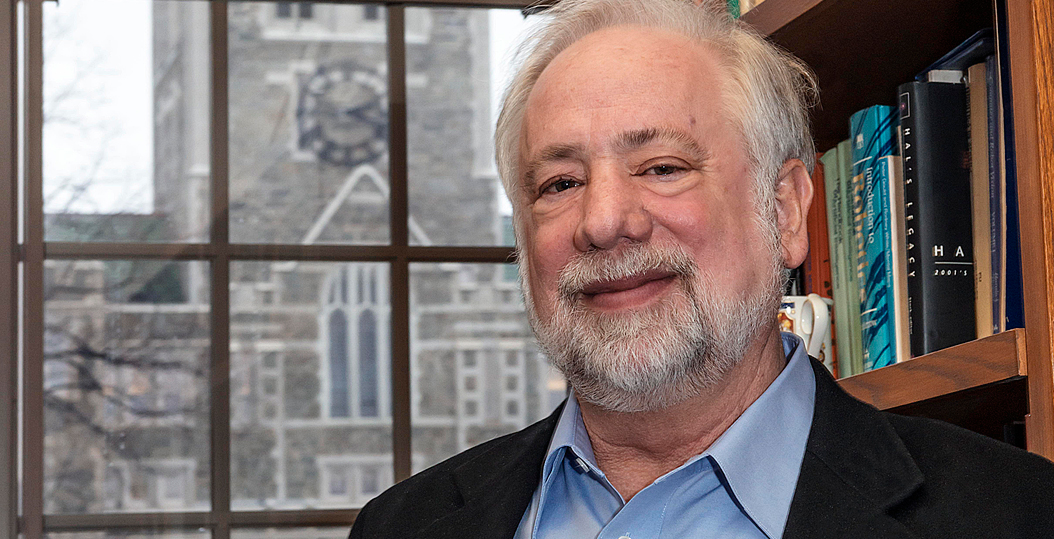At least 75 members of the Boston College community gathered in the Fulton Honors Library on a Friday afternoon last month to share memories of the late Carroll School professor James Gips, who died in August after pancreatic surgery.
The John R. and Pamela Egan Professor of Computer Science, Gips was perhaps best known as the co-inventor of EagleEyes and Camera Mouse, technologies that have given voice to the voiceless. Via electrodes or a webcam, respectively, Gips’ software applications allow nonverbal, paralyzed people—for example, those suffering from severe cerebral palsy, spinal muscular atrophy, or traumatic brain injury—to communicate with the world around them.
Speakers at the event in Fulton included Barbara Gips, the professor’s widow; Rob Fichman, chairperson of the Information Systems department; and Barbara Cataldo and Kristen Morin of the Campus School at Boston College. The school serves children with multiple disabilities, many of whom have used Gips’s technologies to converse with their families for the first time.
The assistive technologies were just two accomplishments in Gips’s four-decade career of research, publishing, and teaching. To pick another high-profile example, “Jim Gips literally wrote the book on Excel,” noted one information technology professional mingling in the crowd. Several editions of Gips’s Mastering Excel: A Problem-Solving Approach (Pearson) have helped countless students to expertly wield a critical business tool.
“He made me laugh daily,” Barbara Gips told the assemblage, recalling the little running jokes the couple shared, such as when he came home from work and said, “I’m going upstairs to change—but not too much.” She also told of how his eyes lit up when a phone call came from his daughter or son.
Fichman reminded the crowd that Gips founded the Information Systems department at the Carroll School. He led the effort, served as the first chairperson, and fought to secure office space and an assistant for the department. “After I took over,” said Fichman, “I often wondered, ‘WWJD?’ Or ‘What would Jim do?’ But I didn’t have to ponder long; I could just walk down the hall and ask him, because he was so generous with his time.”
Morin related her story less as a project manager for the Campus School than as the parent of a former student. Her son Kyle has severe cerebral palsy and is nonverbal. Thanks to Camera Mouse, Morin said, “Kyle is no longer a passive observer of the world. Camera Mouse is a vehicle for him to engage with his sisters, family, and friends.”
“Jim Gips gave us all hope,” Morin said, “and what more could we ask for?”
Gips made no money off his invention. He made it available as a free download in 2007, and it has been downloaded three million times since then. That fact, “more than any service trip or theology class at BC, showed me what it meant to be a man for others,” wrote Andy Kearney ’18, one of 40 former students who penned recollections of Gips in a 36-page booklet printed for the occasion.
Kearney’s classmates echoed this sentiment. “He was an unending source of kindness and empowerment,” wrote Rachel Simon ’18, “and will forever serve as an example to me of what it means to give back to others and exude love.”



